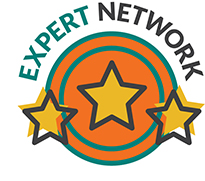6 Novel Mock BIMO Regulatory Inspection Exercises
By Penelope Przekop, MSQA, RQAP-GCP
 Conducting a mock regulatory inspection in preparation for an FDA, EMA, or other regulatory visit is a key industry inspection readiness activity. Traditionally, mock inspector(s) arrive at the sponsor’s reception area and determine if they are greeted appropriately, if the right individuals are notified, if they are properly escorted to an inspection room, etc. Next, the mock inspector mimics the entire process and approach required of regulatory health authority inspectors. Experienced mock inspectors know how to do this based on their personal experience and publicly available information, including but not limited to the FDA Bioresearch Monitoring Program Compliance guidance documents.
Conducting a mock regulatory inspection in preparation for an FDA, EMA, or other regulatory visit is a key industry inspection readiness activity. Traditionally, mock inspector(s) arrive at the sponsor’s reception area and determine if they are greeted appropriately, if the right individuals are notified, if they are properly escorted to an inspection room, etc. Next, the mock inspector mimics the entire process and approach required of regulatory health authority inspectors. Experienced mock inspectors know how to do this based on their personal experience and publicly available information, including but not limited to the FDA Bioresearch Monitoring Program Compliance guidance documents.
However, there are a few major differences between a mock and a real regulatory inspection. Most of the time, the sponsor requires the contracted mock inspector to provide an agenda in advance. In a real inspection, an FDA inspector will not. In a mock inspection, the mock inspector is slated for a finite visit (usually three to five days), whereas the FDA inspector can stay for as long as they deem necessary to meet their inspection guidance criteria and goals. And while an excellent mock inspector intends to conduct a proper, unbiased mock inspection, they are ultimately still contracted by the sponsor. The FDA, of course, does not have a financial agreement with the sponsor. However, the benefits of having a mock inspection far outweigh any incongruencies.
In the spirit of continuous improvement, you may also want to consider novel approaches for conducting mock inspections, particularly considering the significant industry changes related to enhanced technology and extensive outsourcing. In 2023, not every sponsor has a reception area, a meeting room perfect for an inspection, or, in many cases, even a physical location. However, regulators continue to expect sponsors to facilitate their inspections, regardless how much of the hands-on work has been executed by vendors.
The following six mock inspection activities would not be expected to occur all together within three to five days but rather in a nonsequential yet logical timeline to allow lessons to accumulate over time and ultimately support a positive inspection experience and outcome.
1. Schedule a one-day mock inspection of the sponsor’s inspection facilitation strategy and execution.
In this scenario, the scope of this exercise is limited to the inspection and back-room processes and should occur on-site. SME interviews are not conducted beyond those who actively participate in the opening meeting, such as, for example, those who present overview decks. The mock inspector arrives at the inspection site and tests the arrival situation as described above. Do not assume that the FDA expects to show up at your vendor’s door.
Next, the mock inspector focuses on the facilitation and activities in the inspection room. They may question the site setup, who is present, and who is fulfilling what role. The opening meeting goes forward as if it were an actual inspection. An initial document list is provided, and the sponsor follows their planned document request and provision process. This provides practice for the back-room staff. They learn just how many documents are likely to be initially requested. They test any inspection readiness tools that apply. The mock inspector uses the bulk of the day to review as many of the initial documents provided as possible. This exercise tests how questions or additional document requests are handled.
At the end of the one-day exercise, all parties involved reconvene for feedback and a “lessons learned” discussion. Everyone is encouraged to share how it went, what they learned, how they were/are feeling, and what was easiest and hardest about it, among other things. The mock inspector will follow up with a written report.
2. Engage the mock inspector to review all the documents initially requested during the above activity, either remotely or on-site.
The mock inspector continues to review documents and provide specific feedback. The details of how this exercise will work are mapped out and agreed in advance. This can be executed in a variety of ways. For example, the mock inspector can pose questions but not necessarily expect answers. This may seem counterintuitive, but it enables the sponsor to understand what questions are likely to arise when a real inspector looks at that document. For this to be successful, the mock inspector provides feedback as to why this caught their eye. After, quality assurance team members and the applicable SME will explore the feedback to determine if it can easily and clearly be addressed, in addition to remediating any gaps. This approach supports the identification of inspection storyboard topics. It can also illuminate gaps to be addressed and expose any incorrect documents. The mock inspector will follow up with a written report.
3. Schedule a series of SME mock interviews, either remotely or on-site.
The mock inspector interviews each SME, with the appointed QA facilitator included. A scribe can be brought in, if desired. Although it’s an inspection interview practice, it’s also a professional development opportunity. Ideally, the SMEs have completed inspection readiness training and are aware of the interviews in advance. A portion of the meeting is allocated to a candid discussion directly between the mock inspector and the SME. This provides an opportunity for the SME to receive any immediate feedback and to ask questions in a confidential discussion. Following the interviews, the mock inspector provides specific, confidential feedback and recommendations to the QA facilitator. Next, a follow-up series of interviews with the same SMEs occurs to provide an opportunity to practice again, using the feedback they received. Not all SMEs may need to return for a second interview, while others may even require a third session.
The mock interview identifies any serious issues regarding SME selection to ensure that the final SME list will meet FDA expectations and appropriately represent the sponsor during a real inspection.
4. Schedule mock inspection of presentation sessions, either remotely or on-site.
If opening meeting presentations (which I highly recommend) and/or SME presentations are planned, SMEs present to the mock inspector in scheduled sessions. The activity is similar to the SME interviews described above, but the focus is on the presentation content and delivery. This can occur during the SME interview; however, it’s beneficial to do this separately to keep the focus on the presentation versus a completely unscripted question and answer session that can go in unexpected directions. Following the presentations, the mock inspector provides specific confidential feedback and recommendations to the QA facilitator.
5. Schedule mock inspection specific to storyboard topics, remotely or on-site.
The mock inspector meets with a variety of SMEs involved in the storyboard topics, providing an opportunity to test use of the storyboard, its content, and the approach that has been chosen for the topic. In addition to the interviews, a document request and review occurs. If the storyboard is well-prepared, the requested documents are listed in the storyboard and ready to go. A written report including recommendations for improving the existing storyboards is provided.
6. Schedule topic- or function-specific mock inspections.
The mock inspector takes a deep dive into a predetermined topic or function, such as clinical operations, clinical data management, or drug safety, which would not be possible in a traditional mock inspection that calls for inspection of an entire clinical program in three or four days. Depending on the program and sponsor specifics, this takes place over one or more days. Lessons learned from a facilitation-specific mock inspection, SME mock interviews, and any other previous activities are implemented during this event. Both interviews and document reviews occur. This can be combined with the storyboard mock activities described above, if applicable. However, only storyboards related to the topic or function are in scope. A closing meeting occurs, and a written report is provided.
Traditional mock inspections continue to be extremely valuable, yet there are several novel approaches that can replace and/or enhance your traditional mock inspection if combined into an overarching mock inspection strategy plan. A sponsor may select any number of the suggested approaches. However, selecting one or two, particularly if a traditional mock inspection is off the table, is not recommended as it does not provide a full safety net; the goal is to cover all bases. It’s critical to have an experienced mock inspector on board for the activities. The best approaches to finding these individuals are word of mouth and on LinkedIn. Otherwise, these are internal or QA exercises that will likely also provide benefit but not at the level of a true mock activity. The specific industry insight and experience provided by a mock inspection is the sponsor’s greatest advantage. The best possible approach is to create a mock inspection strategy plan that includes which of these segmented activities will occur, potentially including a final traditional mock inspection, along with a timeline that supports inspection readiness before and on the day a regulatory inspector arrives.
About The Author:
 Penelope Przekop is a corporate quality management expert. Throughout her 30+ year career, she has worked with numerous Fortune 100 pharma companies, including Pfizer, Merck, Lilly, and Glaxo Smith Kline, and held leadership positions at Novartis, Covance, Wyeth, and Johnson & Johnson. She is the founder and CEO of PDC Pharma Strategy and serves as the Chief Compliance Officer for Engrail Therapeutics. She is the author of Six Sigma for Business Excellence (McGraw-Hill). Przekop earned a BS in biology from Louisiana State University and an MS in quality systems engineering from Kennesaw State University. She is a graduate of the Smith College Program for Women’s Leadership and the Rutgers University Senior Leadership Program for Professional Women. Her new book, 5-Star Career: Define and Build Yours Using the Science of Quality Management launches in November 2021 from Productivity Press.
Penelope Przekop is a corporate quality management expert. Throughout her 30+ year career, she has worked with numerous Fortune 100 pharma companies, including Pfizer, Merck, Lilly, and Glaxo Smith Kline, and held leadership positions at Novartis, Covance, Wyeth, and Johnson & Johnson. She is the founder and CEO of PDC Pharma Strategy and serves as the Chief Compliance Officer for Engrail Therapeutics. She is the author of Six Sigma for Business Excellence (McGraw-Hill). Przekop earned a BS in biology from Louisiana State University and an MS in quality systems engineering from Kennesaw State University. She is a graduate of the Smith College Program for Women’s Leadership and the Rutgers University Senior Leadership Program for Professional Women. Her new book, 5-Star Career: Define and Build Yours Using the Science of Quality Management launches in November 2021 from Productivity Press.
